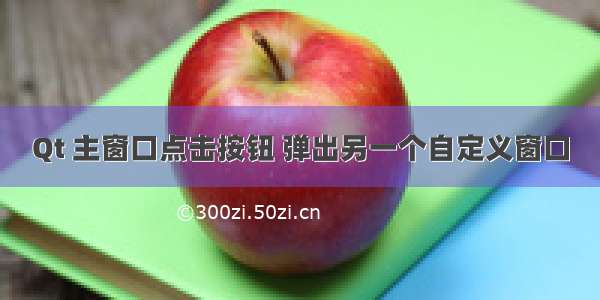
有些时候,我们需要使用弹出窗口,对程序的运行参数进行设置。有两种选择
一、标准窗口
如果只对一个参数进行设置(或者说从弹出窗口取回一个值),那么可以使用simpledialog,导入方法:
from tkinter.simpledialog import askstring, askinteger, askfloat
完整例子
import tkinter as tkfrom tkinter.simpledialog import askstring, askinteger, askfloat# 接收一个整数def print_integer():res = askinteger("Spam", "Egg count", initialvalue=12*12)print(res)# 接收一个浮点数def print_float():res = askfloat("Spam", "Egg weight\n(in tons)", minvalue=1, maxvalue=100)print(res)# 接收一个字符串def print_string():res = askstring("Spam", "Egg label")print(res)root = tk.Tk()tk.Button(root, text='取一个字符串', command=print_string).pack()tk.Button(root, text='取一个整数', command=print_integer).pack()tk.Button(root, text='取一个浮点数', command=print_float).pack()root.mainloop()
二、自定义窗口
如果要设置的参数个数超过两个,那么tkinter提供的标准窗口就处理不了了。
这就需要自定义一个窗口,那么问题来了:怎样将自定义窗口中的数据传回主窗口?
百度查询,不外乎两种方法:全局变量(global)、对象变量([]、{}等),都不是我想要的。
然后,去 stackoverflow 逛了一下,综合了个问题的答案,得到两个本人比较满意的方案。
一种是松耦合,另一种是紧耦合
1)松耦合
说明:
主窗类,继承了tk.Tk弹窗类,继承了tk.Toplevel
要点:
弹窗,将多个数据,打包,放入一个名为username的私有 list 对象,销毁弹窗主窗,待弹窗运行后,通过wait_window方法,取得弹窗的名为username私有变量
完整代码:
import tkinter as tk'''松耦合'''# 弹窗class MyDialog(tk.Toplevel):def __init__(self):super().__init__()self.title('设置用户信息')# 弹窗界面self.setup_UI()def setup_UI(self):# 第一行(两列)row1 = tk.Frame(self)row1.pack(fill="x")tk.Label(row1, text='姓名:', width=8).pack(side=tk.LEFT)self.name = tk.StringVar()tk.Entry(row1, textvariable=self.name, width=20).pack(side=tk.LEFT)# 第二行row2 = tk.Frame(self)row2.pack(fill="x", ipadx=1, ipady=1)tk.Label(row2, text='年龄:', width=8).pack(side=tk.LEFT)self.age = tk.IntVar()tk.Entry(row2, textvariable=self.age, width=20).pack(side=tk.LEFT)# 第三行row3 = tk.Frame(self)row3.pack(fill="x")tk.Button(row3, text="取消", command=self.cancel).pack(side=tk.RIGHT)tk.Button(row3, text="确定", command=self.ok).pack(side=tk.RIGHT)def ok(self):self.userinfo = [self.name.get(), self.age.get()] # 设置数据self.destroy() # 销毁窗口def cancel(self):self.userinfo = None # 空!self.destroy()# 主窗class MyApp(tk.Tk):def __init__(self):super().__init__()#self.pack() # 若继承 tk.Frame ,此句必须有!self.title('用户信息')# 程序参数/数据self.name = '张三'self.age = 30# 程序界面self.setupUI()def setupUI(self):# 第一行(两列)row1 = tk.Frame(self)row1.pack(fill="x")tk.Label(row1, text='姓名:', width=8).pack(side=tk.LEFT)self.l1 = tk.Label(row1, text=self.name, width=20)self.l1.pack(side=tk.LEFT)# 第二行row2 = tk.Frame(self)row2.pack(fill="x")tk.Label(row2, text='年龄:', width=8).pack(side=tk.LEFT)self.l2 = tk.Label(row2, text=self.age, width=20)self.l2.pack(side=tk.LEFT)# 第三行row3 = tk.Frame(self)row3.pack(fill="x")tk.Button(row3, text="设置", command=self.setup_config).pack(side=tk.RIGHT)# 设置参数def setup_config(self):# 接收弹窗的数据res = self.ask_userinfo()#print(res)if res is None: return# 更改参数self.name, self.age = res# 更新界面self.l1.config(text=self.name)self.l2.config(text=self.age)# 弹窗def ask_userinfo(self):inputDialog = MyDialog()self.wait_window(inputDialog) # 这一句很重要!!!return inputDialog.userinfoif __name__ == '__main__':app = MyApp()app.mainloop()
2)紧耦合
说明:
主窗类,继承了tk.Tk弹窗类,继承了tk.Toplevel
要点:
弹窗,显式地保存父窗口,显式地修改父窗口数据,显式地更新父窗口部件,最后销毁弹窗主窗,待弹窗运行后,通过wait_window方法,返回 None
完整代码:
import tkinter as tk'''紧耦合'''# 弹窗class PopupDialog(tk.Toplevel):def __init__(self, parent):super().__init__()self.title('设置用户信息')self.parent = parent # 显式地保留父窗口# 第一行(两列)row1 = tk.Frame(self)row1.pack(fill="x")tk.Label(row1, text='姓名:', width=8).pack(side=tk.LEFT)self.name = tk.StringVar()tk.Entry(row1, textvariable=self.name, width=20).pack(side=tk.LEFT)# 第二行row2 = tk.Frame(self)row2.pack(fill="x", ipadx=1, ipady=1)tk.Label(row2, text='年龄:', width=8).pack(side=tk.LEFT)self.age = tk.IntVar()tk.Entry(row2, textvariable=self.age, width=20).pack(side=tk.LEFT)# 第三行row3 = tk.Frame(self)row3.pack(fill="x")tk.Button(row3, text="取消", command=self.cancel).pack(side=tk.RIGHT)tk.Button(row3, text="确定", command=self.ok).pack(side=tk.RIGHT)def ok(self):# 显式地更改父窗口参数self.parent.name = self.name.get()self.parent.age = self.age.get()# 显式地更新父窗口界面self.parent.l1.config(text=self.parent.name)self.parent.l2.config(text=self.parent.age)self.destroy() # 销毁窗口def cancel(self):self.destroy()# 主窗class MyApp(tk.Tk):def __init__(self):super().__init__()# self.pack() # 若继承 tk.Frame,此句必须有!!!self.title('用户信息')# 程序参数self.name = '张三'self.age = 30# 程序界面self.setupUI()def setupUI(self):# 第一行(两列)row1 = tk.Frame(self)row1.pack(fill="x")tk.Label(row1, text='姓名:', width=8).pack(side=tk.LEFT)self.l1 = tk.Label(row1, text=self.name, width=20)self.l1.pack(side=tk.LEFT)# 第二行row2 = tk.Frame(self)row2.pack(fill="x")tk.Label(row2, text='年龄:', width=8).pack(side=tk.LEFT)self.l2 = tk.Label(row2, text=self.age, width=20)self.l2.pack(side=tk.LEFT)# 第三行row3 = tk.Frame(self)row3.pack(fill="x")tk.Button(row3, text="设置", command=self.setup_config).pack(side=tk.RIGHT)# 设置参数def setup_config(self):pw = PopupDialog(self)self.wait_window(pw) # 这一句很重要!!!returnif __name__ == '__main__':app = MyApp()app.mainloop()


![[PYQT5] 主窗口弹出子窗口](https://300zi.50zi.cn/uploadfile/img/15/464/e5dfee25d226b5e8841fb6914058ea89.jpg)













